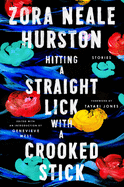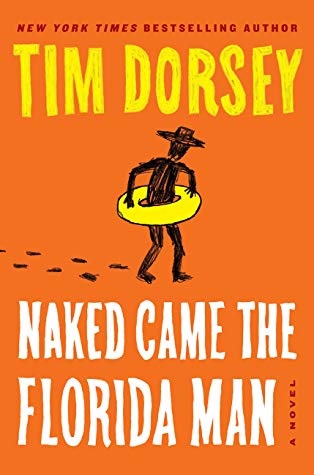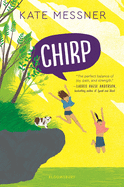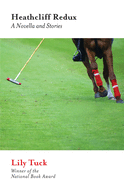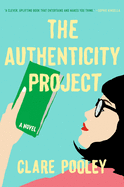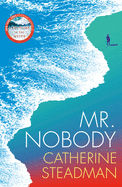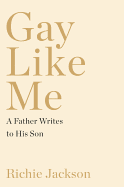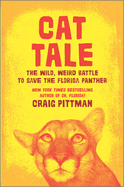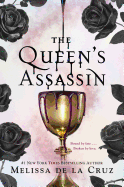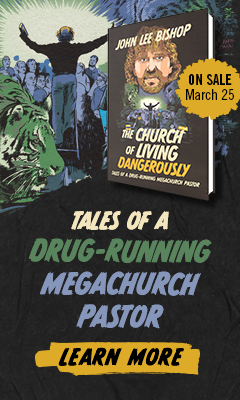Week of Friday, February 7, 2020
There's a certain type of reader so enthralled by books that they enjoy consuming other books about them. If that describes you, here are three to sate your appetite.
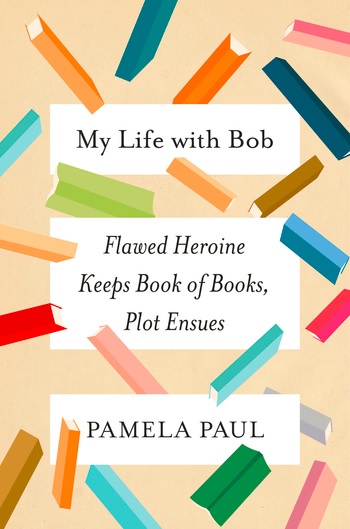 Disciplined readers will delight in New York Times Book Review editor Pamela Paul's My Life with Bob: Flawed Heroine Keeps Book of Books, Plot Ensues (Holt, $27), a memoir Paul has constructed around the reading record she's maintained since 1988. (My own version of "BOB"--Book of Books--dates to late 1979.) Paul's heartfelt book is less a detailed account of her reading than it is the story of books as her life companions, whether she was trekking solo across China or mourning the end of her brief first marriage.
Disciplined readers will delight in New York Times Book Review editor Pamela Paul's My Life with Bob: Flawed Heroine Keeps Book of Books, Plot Ensues (Holt, $27), a memoir Paul has constructed around the reading record she's maintained since 1988. (My own version of "BOB"--Book of Books--dates to late 1979.) Paul's heartfelt book is less a detailed account of her reading than it is the story of books as her life companions, whether she was trekking solo across China or mourning the end of her brief first marriage.
 Do you fall into despair when you see a headline pronouncing the "end of reading?" Leah Price's What We Talk About When We Talk About Books: The History and Future of Reading (Basic Books, $28) could be the antidote. In this slim volume, Price, a Rutgers University English professor and book historian, argues persuasively that the consumption of the written word has always adjusted to new technologies, and that the shortened attention spans that electronic reading triggers are only the latest surmountable challenge.
Do you fall into despair when you see a headline pronouncing the "end of reading?" Leah Price's What We Talk About When We Talk About Books: The History and Future of Reading (Basic Books, $28) could be the antidote. In this slim volume, Price, a Rutgers University English professor and book historian, argues persuasively that the consumption of the written word has always adjusted to new technologies, and that the shortened attention spans that electronic reading triggers are only the latest surmountable challenge.
 And for those inclined to pass judgment when scanning the bookshelves of a new acquaintance, My Ideal Bookshelf (Little, Brown, $24.99) is a treat for the mind and eye. This small coffee-table book, a collaboration between editor Thessaly La Force and artist Jane Mount, features La Force's interviews with more than 100 writers and other creatives, among them Rosanne Cash and George Saunders, who each select books that possess special meaning for them. Mount reproduces the spines of those books in colorful illustrations.
And for those inclined to pass judgment when scanning the bookshelves of a new acquaintance, My Ideal Bookshelf (Little, Brown, $24.99) is a treat for the mind and eye. This small coffee-table book, a collaboration between editor Thessaly La Force and artist Jane Mount, features La Force's interviews with more than 100 writers and other creatives, among them Rosanne Cash and George Saunders, who each select books that possess special meaning for them. Mount reproduces the spines of those books in colorful illustrations.
Don't be surprised if even a brief perusal sparks the urge to find your next good read. --Harvey Freedenberg, freelance reviewer
Hitting a Straight Lick with a Crooked Stick: Stories from the Harlem Renaissance
by Zora Neale Hurston
Zora Neale Hurston's (Their Eyes Were Watching God; Barracoon) impressive posthumous body of work continues to grow. Her previously published stories focused on the life of African Americans in the rural South. In Hitting a Straight Lick with a Crooked Stick, 21 short stories--including several "lost" pieces depicting the Great Migration to northern cities and Harlem's educated New Negro middle class--offer an updated perspective of Hurston's Harlem Renaissance-era cultural commentary.
"Almost a century later," writes editor Genevieve West in her introduction, "Hurston's contributions to American literary culture continue to inform the ways we talk about the Harlem Renaissance, Modernism, women's literature, folk literature and folklore, ethnography, migration fiction, and Southern literature." These stories, written in the 1920s and '30s, explore toxic masculinity and women's agency, urban vs. rural class representations, colorism/shadeism, identity politics and the intersectionality of race, class, age and gender in ways that remain relevant today.
And by using humor, folklore and her distinctive combination of delicate prose and vernacular speech, Hurston also has written thoroughly engaging slices-of-life, always centered on black characters, from a specific time. Consider "She dismounted with the gaudy lemon flavored culprit and advanced to the gate where Grandma stood glowering, switches in hand," juxtaposed next to, "You're gointuh ketchit f'um yo' haid to yo' heels m'lady. Jes' come in heah," from "Drenched in Light." To appreciate Hurston's stories fully, Tayari Jones (An American Marriage) recommends, in her foreword, "reading this work aloud, enjoying the feel of the words in your mouth, and the sound of English tightened and strummed like the strings of a banjo." --BrocheAroe Fabian, owner, River Dog Book Co., Beaver Dam, Wis.
Discover: Zora Neale Hurston's Harlem Renaissance legacy is updated with this collection of 21 short stories that includes several reclaimed pieces.
Heathcliff Redux: A Novella and Stories
by Lily Tuck
That the world can be unkind, particularly to women, isn't lost on National Book Award-winner Lily Tuck (The News from Paraguay; Sisters). With her signature unembellished prose, Tuck often writes about women whose prospects are limited by their historical era and choice of mate.
Likewise, the women of the stellar Heathcliff Redux: A Novella and Stories are vulnerable in ways that the men around them are not. In the title novella, set in 1963, the narrator recounts her affair with a man who is in business with her domineering husband. Readers will detect a note of wistfulness when she reflects, "Charlie and I started dating my freshman year in college; we got married after he graduated. I got pregnant right away with the twins and did not graduate." In "The Dead Swan," another woman abandoned pursuits that could have given her more of a foothold on her future. She showed promise as a photographer--one of her pictures was selected for a group exhibition. But it was at this exhibition that she met her husband, which has led to a life of substitute teaching and awaiting his return from prison. Also no better off for having thrown in her lot with a man--a cult leader--is the protagonist of "A Natural State," who starts receiving unnerving e-mails that force her to remember this aspect of her past.
The women of Heathcliff Redux aren't without agency: like their male counterparts, they take drugs, have affairs. But Tuck's stories' power imbalances, especially men's surpassing physical strength, keep the writer ever watchful, her sentences stark with circumspection and glistening with clarity. --Nell Beram, author and freelance writer
Discover: The National Book Award winner's superb third collection features women dependent on or done wrong by men.
The Authenticity Project
by Clare Pooley
Online, everyone's lives look happy and perfect, which makes Clare Pooley's (The Sober Diaries) charmed novel, The Authenticity Project, a fresh, welcome and necessary change of pace.
Monica is a single, 37-year-old Brit who gave up her corporate law to open a London café. She discovers a simple exercise book left behind in her coffee shop, with three words etched on the cover: "The Authenticity Project." The first page reads: "Everyone lies about their lives. What would happen if you shared the truth instead...? Not on the internet, but with those real people around you?"
Intrigued, Monica learns the book was initiated by 79-year-old Julian Jessop, who committed his truth to its pages. Julian expresses the deep-seated loneliness he's experienced for five years, since the loss of his wife, Mary, whom he appreciated only once she was gone. Julian created the Authenticity Project to purge his own feelings and deliberately left the book with his story behind, hoping that whoever read his entry would be inspired to share their own story in its pages and then leave the book for others to do the same.
Monica searches for Julian online and discovers he is a famous portrait painter. In the meantime, she leaves the notebook, with her entry added, in a local wine bar. It lands with a cocaine addict, Hazard, who takes it with him as he sobers up on a remote island in the South China Sea. What ensues is a clever story of how the notebook travels from person to person, six strangers who ultimately discover each other and form bonds of commonality, friendship and love. --Kathleen Gerard, blogger at Reading Between the Lines
Discover: A notebook created for the purpose of confessing intimate, personal truth turns British strangers into friends as they form an unlikely bond of trust.
Everywhere You Don't Belong
by Gabriel Bump
Gabriel Bump's debut, Everywhere You Don't Belong, is an excellent coming-of-age novel that will make you laugh when you least expect it. Growing up on the South Side of Chicago, Claude lives with his Grandma and her friend Paul--their relationship is close but difficult to define--after being abandoned by his parents. Much of Claude's childhood is characterized by friends and family leaving him behind, including a gifted basketball player named Jonah whose talents are regarded as semi-divine by Paul and the Chicago Bulls-worshipping community. At a shockingly young age, Claude finds himself reflecting on all the people that loved and left him: "All those far away people sat inside me, waved, wished me well. Most nights, outside my bedroom window, all that love felt far away, impossible to see and feel." The narrative has an episodic feel, with two questions always in the background: Can Claude leave the South Side? Should he?
Grandma is a force of nature with a talent for understated quips. The novel opens with Claude's memory of his father wrestling another man on the street, determined to make the man apologize for saying that he looks like Booker T. Washington. The encounter ends after Grandma declares: "That's it.... Enough culture for one day." Much of the humor in the book comes from these outlandish yet sympathetic characters. Bump has a talent for writing scenes with a combination of absurdity and pathos. When Paul attempts to get revenge on the man who beat him up and took his lover, first with a staff that he bought at a garage sale--"The woman said it was African and ancient"--and then with a pair of nunchaku, his attempts at bravado are amusing and pitiful at the same time. When Claude tries to calm him, Paul responds: "There are no small injustices in this world." It's both ridiculous and possibly correct.
Claude plays the straight man in many of these encounters, a low-key boy and then a man who finds himself thrust repeatedly into the midst of violence. He is beaten viciously by a basketball player, attacked by the coach when he refuses to lie about who did it, and later forced into a kind of impromptu fight club. His defensive strategy in the latter is hilarious: "I started screaming. So I was running around, kicking his shins, trying to punch his balls, and screaming as loud as I could. I might've looked like I was winning." The humor and the terror of these scenes are always closely interwoven. The way that violence finds Claude is so unpredictable and inevitable that it seems there's little chance of him finding a way to avoid it.
In a crucial episode, violence seems to hit the whole neighborhood like a hurricane. The crisis is prompted by a police killing reminiscent of what happened to Eric Garner and so many more black teens and men: "So long story short, the cops catch the kid and sit on him because the kid won't cooperate. They sit on him so the kid can't run away. But they end up suffocating him. They were choking him too, I think." A riot ensues, sparked by the killing and a confrontation between police and a gang called the Redbelters. Amid the chaos, Claude seems paralyzed by his lack of choices. Or, as he puts it: "There was no available peace. Throughout high school, my history teachers wouldn't explain what happens when there's no available peace." Everywhere You Don't Belong is set in the recent past, but there's no doubt that it is in dialogue with the present. When Bump writes about then-Senator Obama vowing to take legislation to Washington in response to the riot, it's difficult not to think about how little has changed in the time since.
In spite of his history with abandonment, Claude has a tendency to put his faith in people, and so it makes sense that when he falls in love with a schoolmate, Janice, he stays in love, even after Janice suffers a tragedy at the riot that seems to push them apart. When Claude finally leaves Chicago for the University of Missouri, he finds himself missing her and his hometown. At the university, readers are treated to an entertaining parody of college life and the student newspaper that Claude works for, the Prairie Executioner. Here, people seem to be operating in a different universe from Claude, such as his roommate Kenneth, whose arcane obsessions make him more suited for a world of "beanbag mountains and lava-lamp rivers," and Connie Stove, a legendary journalist who gives lengthy, off-the-wall speeches: "Acid turned our minds into glorious sponges. We turned the pizza boxes into dioramas of public monuments. We made a pizza-box Lincoln Memorial and stomped on it until the greased cardboard turned to mush." Meanwhile, Claude is being pushed to "translate the black experience" at the newspaper. It's no wonder he finds himself alienated and homesick for the very place he worked so hard to escape.
At every point in Claude's life, he finds himself torn in different directions. His choices all come with compromises, if he has any good options at all. Everywhere he turns, there is no available peace. Bump has written a sprawling novel, despite the short length, with sharp bursts of wit that never undermine Claude's predicament. Everywhere You Don't Belong is a book about the tragic absurdity of growing up in a place that you both love and need to leave. --Hank Stephenson
Mystery & Thriller
Naked Came the Florida Man
by Tim Dorsey
Tim Dorsey (No Sunscreen for the Dead) continues to deliver hilarious anarchy in his 23rd Serge Storms novel, Naked Came the Florida Man. Serge, driving his gold '69 Plymouth Satellite, makes a tour of Florida cemeteries. "Cemeteries rock!" he explains to his sidekick, Coleman. "They're portals to our roots with all the obvious history, not to mention upbeat landscaping and bitchin' statuary." The road trip frames the pair's increasingly outrageous antics. Serge says, "Nobody could ever write a better job description for me: Florida, no appointments and a tank of gas."
Serge has a well-known aversion to what he considers unethical behavior, leading to retribution that manages to be sociopathic and funny all at once; several miscreants along the way find themselves humiliated or worse. His personal code of honor, twisted as it is, covers all living things. Upon discovering a man who's harming a seagull, Serge mildly notes, "Seagulls are widely misunderstood creatures" before violently teaching the offender a lesson. "I guess I just can't understand the concept of torture," he concludes without any irony at all.
The most puzzling mystery they encounter--rumors of a monster haunting an abandoned sugar field--leads to small-town rodeos, high school football and, yes, a crazy Florida Man. The satisfying conclusion, where bad guys lose and good guys win, is a hallmark of the series. Both continuing and first-time readers looking for a humorous story with dark edges will find this a delightfully nihilistic adventure in the Sunshine State. --Cindy Pauldine, bookseller, the river's end bookstore, Oswego, N.Y.
Discover: Serge Storm and his sidekick Coleman solve a decades-old mystery during a highly irregular tour of Florida cemeteries.
The Hollows
by Jess Montgomery
Set in 1926 southern Ohio and replete with the era's racism, sexism and anti-immigration sentiment, The Hollows is a fast-paced second installment in Jess Montgomery's Kinship historical mystery series.
In an eerie prologue, an elderly woman stumbles through the Appalachian woods by the light of a full moon, seeking the Moonvale Hollow Tunnel. The novel then moves ahead two hours, as Sheriff Lily Ross arrives to investigate the death of an unidentified woman found on the train tracks under the tunnel.
Lily is a conscientious sheriff, although some dismiss her as "a novelty," appointed to fill her late husband's term. (While The Hollows is a satisfying stand-alone, several plot threads originate in The Widows, book one of the series.) Running for re-election against an heir to the village founders and raising her two children is demanding, but Lily feels compelled to identify the woman and the truth about her death. Supporting her are her two best friends, wise yet timid Hildy, immersed in her own drama of a secret affair with a coal miner, and bold Marvena, an organizer for the United Mine Workers, whose other skills include making moonshine. Hildy and Marvena become integral to solving the case, while their individual stories enhance The Hollows.
Colorful Appalachian dialect and details of geography and nature add to a well-crafted mystery that takes place primarily over two weeks. The Immigration Act of 1924, which limited potential miners; the southern Ohio underground railroad stops and its Quaker supporters; and the Women's KKK movement of the 1920s emerge as factors in the case, making The Hollows dynamic historical fiction as well as a riveting mystery. --Cheryl Krocker McKeon, freelance reviewer and former bookseller
Discover: A compelling novel set in 1920s southern Ohio reflects the prejudices of the era as a woman sheriff defies society and solves a mystery.
Mr. Nobody
by Catherine Steadman
It's clear from Mr. Nobody that Catherine Steadman understands a lot about neuropsychiatry and neuroscience. Put in TV industry terms: in the role of amateur neuropsychiatrist, Steadman, an English actress best known for her role on television's Downton Abbey, is thoroughly convincing.
A man wakes up on a beach with a head wound, wet clothes, no shoes, and some faded writing on his hand. He hasn't got an ID, which would have been useful: he claims not to know who he is. He says he doesn't remember anything before he was found. Is his memory loss retrograde amnesia, meaning caused by a physical injury, or extremely rare dissociative fugue, meaning the result of a psychological trauma?
Entrusted to work on the "Mr. Nobody" case is Emma Lewis, a 30-year-old London neuropsychiatrist. Emma accepts the potentially career-crowning assignment with some trepidation: since the man was found on Holkham Beach, in Norfolk, where Emma grew up, she must treat him at the local hospital, and she's wary of being recognized. Sure enough, when Mr. Nobody finally speaks, he addresses Emma by her childhood name, which she changed following a media-circus-precipitating family tragedy that took place 14 years earlier.
Steadman is a fine storyteller, as will attest fans of her first thriller, Something in the Water. While Mr. Nobody's main concerns are cerebral, readers who like a good knock-down-drag-out won't be disappointed. Steadman's book just might be literature's first in which a character dukes it out while a folding chair is tied to her ankle. --Nell Beram, author and freelance writer
Discover: The multitalented Downton Abbey actress has written not so much a psychological thriller as a psychiatric one.
Science Fiction & Fantasy
Zed
by Joanna Kavenna
Zed is a darkly comic satire of Silicon Valley's worst tendencies taken to excess. In the near future, tech giant Beetle has perfected a predictive algorithm called the lifechain. Operating above archaic concepts such as sovereignty and corporate taxes, Beetle guides citizens of the Western world to the best possible versions of their lives in Beetle's surveilled cities. Via omnipresent BeetleBands and BeetlePads, sentient AI assistants called Veeps cheerfully remind people to calm down, or drink more water, or rest--whatever the lifechain predicts is best. For Beetle CEO and unrepentant womanizer Guy Matthias, everything is going great, except for the pesky issue of human free will.
One morning in London, Beetle bigwig Douglas Varley awakens to learn that an unassuming, predicted-non-criminal has murdered his own wife and children. In the process of apprehending the murderer, a Beetle Anti-Terror Droid kills an innocent man. Eloise Jayne, member of the neutered U.K. national security apparatus, pursues the case despite having almost no power. David Strachey, last editor of the last newspaper in London, is theoretically a member of the free press, though his salary (paid in BeetleBits) is dependent on positive coverage of Guy Matthias's company. While Strachey struggles to spin the death of a random bystander by a Beetle robot, a mysterious figure named Bel Ami seeks to stir sedition in the editor's heart. Above all else, these dystopia denizens must deal with a sudden breakdown of the lifechain caused by unpredictable human behavior--a phenomenon called Zed.
Joanna Kavenna (A Field Guide to Reality) has a savage sense of humor and deft eye for ridiculous tech trends. Zed is as hilarious as it is horrifyingly plausible. --Tobias Mutter, freelance reviewer
Discover: Tech giant Beetle's lifechain successfully predicts everyone's behavior, until the glitch of free will breaks the algorithm.
Biography & Memoir
Gay Like Me: A Father Writes to His Son
by Richie Jackson
TV and Broadway producer Richie Jackson's memoir, Gay Like Me, is presented as a letter to his gay teenage son, but all young LGBTQ people will find it inspiring, uplifting and essential reading. "I have always felt lucky to be gay," writes Jackson. "Everything good that has happened to me is because I am gay." In reviewing his life, Jackson also shares gay history and offers context to his coming out at 18 in 1984, compared to his son's coming out three decades later. "I am scared for your safety and elated for what is in store for you," he writes.
The steady stream of gay representation and civil rights advancement that some take for granted is a very recent thing, Jackson cautions. When Jackson and actor BD Wong adopted their son in 2000, the New Yorkers had to do their surrogacy in California because it was the only state that would allow two men's names on a birth certificate. The couple split, after 15 years together, when their son was three. Jackson urges his son to find gay history (pointing him toward James Baldwin, Edmund White, Vito Russo and his mentor and friend Harvey Fierstein) and remain politically informed. He worries that his son's generation, many of whom have never been in the closet, are disadvantaged by having no gay protective reflex or gay guard. "We are legal, not safe," he warns.
Gay Like Me is an irresistible, breezy, heartfelt and upbeat mixture of memoir, fatherly advice and gay history 101. --Kevin Howell, independent reviewer and marketing consultant
Discover: A gay dad's buoyant little instruction book for his gay son is essential reading for all LGBTQ people trying to find their place in the world.
Science
Humble Pi: When Math Goes Wrong in the Real World
by Matt Parker
The average person has little use for--or interest in--applying numbers, statistics and mathematical reasoning to everyday life. Yet, "today's world is built on mathematics: computer programming, finance, engineering... it's all just math in different guises." Most human beings take math completely for granted--an exception being Matt Parker, a stand-up comedian, YouTube sensation and writer of all things calculative. Parker offers a thoroughly entertaining and engaging look at numerical and mathematical scenarios that have gone terribly awry, wreaking havoc in unexpected ways.
The stories in Humble Pi: When Math Goes Wrong in the Real World range from how the calendar and leap year came into being to air traffic control and NASA mishaps, computer glitches, and how human error and data entry gone bad can account for a myriad of numerical dilemmas--including election polling and financial problems. Some blunders are extraordinarily bizarre: the harrowing story of the Tacoma Narrows Bridge disaster in Washington State, and how a building--an architectural marvel--in London started to set the city ablaze. Others are more elementary: glitches in the program Excel, units of measurement and geometrical patterns.
Parker (Things to Make and Do in the Fourth Dimension) adds up his findings in an amusing, pragmatic way that keeps readers--even the math-averse--glued to the page. This book screams of clever, fun originality, including Parker numbering the pages of the book backwards. Readers should hope that Parker's prediction for the possibility of a Y2K-like scenario in the year 2038 will be rectified long before pandemonium strikes. --Kathleen Gerard, blogger at Reading Between the Lines
Discover: A thoroughly entertaining look at mathematical mishaps that have unexpectedly paved the way for improved numerical reasoning.
Nature & Environment
Cat Tale: The Wild, Weird Battle to Save the Florida Panther
by Craig Pittman
Equal parts cautionary and alluring, Cat Tale is a story about which Craig Pittman warns, "This being Florida, there's going to be some weirdness sprinkled into this tale." The state's reputation as home to the bizarre is enhanced by Pittman's recounting of efforts to save Florida's official animal (and how that came to be is itself an oddity within oddities). A Tampa Bay Times journalist and author of several books about zany goings-on in his native state (Oh, Florida!), Pittman turns his environmentalist eye to the plight of the Florida panther.
Panthers (aka cougars, mountain lions, catamounts--all pumas) once ranged across North America, playing a crucial role in ecosystem health. As development expanded, so did conflicts between fierce predator, man and machines, until just between six and 20 big cats remained in the state. Those stragglers were in bad shape, and at risk of disappearing altogether by 2016. Cat Tale shares the extraordinary efforts of the individuals who set out to save the Florida panther from extinction.
As advertised, Pittman provides plenty of the peculiar, sprinkled liberally over absorbing science (and attempts to undermine it), dedication and courage (panther mouth-to-mouth resuscitation, anyone?), colorful heroes and villains, local lore and, naturally, political and governmental shenanigans. Pittman admirably distills decades of history and research with a reporter's acumen and a humorous soul. An enthralling story that begins with "a fussy archaeologist, a tiny wooden carving, and a wealthy playboy with a ninety-foot houseboat" ends up as a timely cautionary tale of what it takes to undo humanity's continuing ravaging of the Earth. --Lauren O'Brien of Malcolm Avenue Review
Discover: A rollicking good story of the scientists, researchers and trackers who hunt and study the endangered Florida panther and the forces that undercut their efforts to save it.
Children's & Young Adult
Chirp
by Kate Messner
Cricket farm sabotage, a spying moose, parent-enforced summer camps and a deep, dark secret buried in a gym bag: Kate Messner's Chirp is a deliciously layered concoction of mystery, friend bonding and girl power.
When 12-year-old Mia moves with her family back to Vermont after a couple of years in Boston, she is a much quieter, more cautious girl. The year before, Mia broke her arm in a balance beam accident. Now, although she's been cleared to return to the gym, she wants to put her gymnastics years behind her. Even so, her parents are making her participate in two camps this summer: "Something for [her] body and something for [her] brain," as her mom keeps reminding her. Reluctantly, Mia signs up for an entrepreneurial launch program and a warrior challenge camp. Soon, in spite of herself, Mia is making friends and immersing herself in ideas to make her grandmother's cricket farm more profitable and sustainable. Unfortunately, it looks like someone is sabotaging the farm, and a businessman with the Nancy Drew-worthy name of Chet Potsworth might be the one behind the destructive shenanigans.
Mystery lovers may be captivated by the twists and turns of this well-written whodunnit, but Chirp's appeal is broad enough to find fans of many stripes. Some may even come for the mystery but stay for the complex characterizations and skilled plot development. Any reader will be able to cheer Mia on as she rebuilds her confidence and strength after a rough and disturbing year. Messner (The Brilliant Fall of Gianna Z.; Breakout; The Brilliant Deep) gracefully spins multiple threads into one beautiful, empowering novel that is likely to satisfy warriors and quietly courageous readers alike. --Emilie Coulter, freelance writer and editor
Discover: In this gorgeously crafted middle-grade novel, a girl works to save her grandmother's cricket farm while rebuilding her own physical and emotional strength after a traumatic year.
True to Your Selfie
by Megan McCafferty
True to Your Selfie, Megan McCafferty's 11th novel for teen and tween readers, is a genuine (and genuinely entertaining) novel about middle-school growing pains. While this may be a common topic, it's not often addressed from the point of view McCafferty takes here: the Cool Girl.
Ella is perfectly set up to start seventh grade. She is best friends with the wealthy, popular Morgan Middleton and the two of them post videos of themselves doing pop song covers, with Morgan singing lead and Ella playing ukulele and singing harmony. With 10,000 followers on "each of the most important socials," #Morgan&Ella have a solid start on reaching Morgan's goal of "global multiplatform domination." It's great. Right? But Morgan is slightly domineering--she chooses Ella's outfits, makes her schedule and has dubbed her the "Goofball Goddess" to Morgan's own "Girlboss Goddess Next Door." Ella would talk to her best friend, Sophie, about all of this, but Morgan doesn't like Sophie, so Ella can't, either.
Since readers of middle-grade and YA are often given a surrogate in Sophie's position, Ella could easily come across as a Mean Girl more than a Cool Girl. Goofball Goddess seems like an insult--and is in relation to Girlboss Goddess--but tells a truth about Ella. Her first-person point of view, told in quick, sharp chapters, shows a girl who is friendly, easy going, messy, generally happy and eager to try new things. McCafferty builds her in such a way that her development (from average to cool and back again) seems true and understandable. Besides, how many middle-schoolers would say no to instant popularity and global multiplatform domination? --Siân Gaetano, children's and YA editor, Shelf Awareness
Discover: Ella enters seventh grade as one half of the Internet-popular duo #Morgan&Ella but slowly realizes best friend Morgan might not be a friend at all.
The Queen's Assassin
by Melissa de la Cruz
It is well known that Caledon Holt, a member of the Hearthstone Guild ("a society of assassins and spies") is the deadliest person in Renovia. His father, the king's assassin, attempted at the time of the king's death to safeguard Renovia's future by pledging his own life and that of his heir to the crown. Eighteen years later, Caledon is bound by this blood magic to be the queen's assassin.
Shadow is a longtime admirer of Cal; all she has ever wanted is to be a member of the Hearthstone Guild and help them fulfill their quest to retrieve the Deian Scrolls, "the fount of all magical history, information, practice and use." Instead, she is told to serve the crown as a lady of the court. Then, Cal is arrested for treason. Having witnessed the crime, Shadow knows Cal is innocent and seizes the opportunity to escape court life: she determines to save him and pose as his apprentice. Together, the two discover a conspiracy against the crown and work as a team to prevent impending war.
In The Queen's Assassin, Cal and Shadow's lives intertwine as they fight to save their home. Melissa de la Cruz uses the protagonists' alternating points of view to show how each character, though vastly different from one another, is a victim of fate--neither owns their own life even though being thrust into a war will ultimately determine their destinies. The prolific Melissa de la Cruz weaves an intricate fantasy filled with intrigue, magic and romance. --Tasneem Daud, blogger and booktuber, Nemo Reads
Discover: In Melissa de la Cruz's YA title The Queen's Assassin, a lady of the court and an assassin are forced to team up to save their kingdom.
| the church of living dangerously |
|


